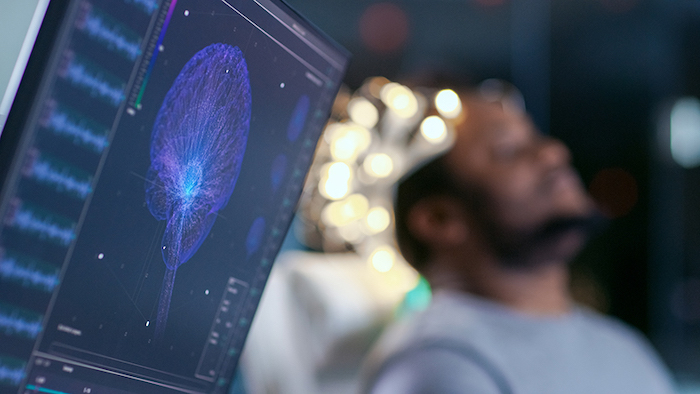
Pain memory may be encoded in the brain during sleep much the same way other memories are, opening the door to potential therapeutic targets.
Difficulty sleeping can be both a result of chronic pain and a contributor to it. Indeed, poor sleep is a known risk factor for chronic pain, and there is general consensus about this relationship in both the clinical and scientific community, noted Jonathan Elliott, PhD. Dr. Elliott is an assistant professor of neurology at the Oregon Health Sciences University School of Medicine and a research physiologist at the VA Portland Health Care System.
Despite these links, the exact relationship between sleep and chronic pain is not well understood. “There’s a lot more work to be done to define the mechanistic underpinnings of those relationships,” said Dr. Elliott.
A study published in January 2023 in Nature Neuroscience may shed some light on this complex and often mysterious relationship while also offering better ways to treat pain.
Hyperactive Neurons
Researchers at Columbia University Medical Center and New York University School of Medicine used mice with spared nerve injury (SNI), a common method of studying neuropathic pain in animal models, to examine the changes to somatosensory circuits caused by pain. They cut two branches of the sciatic nerve in the thighs of the animals, leaving the sural nerve intact, thus creating a hypersensitivity typical of neuropathic pain due to peripheral nerve injury. In the control animals, the sciatic nerve was exposed for sham surgery, but not cut.
Before and after surgery, the researchers monitored brain activity in the mice. They found hyperactivity in S1 pyramidal neurons (PNs) during wakefulness and during nonrapid eye movement (NREM) sleep, but not during rapid eye movement (REM) sleep. This hyperactivity was more pronounced during NREM sleep than during periods of quiet wakefulness. The hyperactivation of S1 PNs increased during the weeks following the surgery, as the pain became chronic.
Hyperactivity in the anterior nucleus basalis (aNB) of the basal forebrain was also apparent during NREM sleep. This was caused, the study’s authors wrote, by “increased inputs from the parabrachial nucleus (PB) driven by the injured peripheral afferents.”
Potential for Neural Pain Treatments
The findings indicate that the PB-aNB-S1 pathway during sleep is crucial for generating and maintaining chronic pain, further suggesting that the timing of treatment is crucial. The team also found that inhibiting this pathway during NREM sleep, but notably not during wakefulness, corrected the neuronal hyperactivity and alleviated the pain.
“We find that neuronal inhibition during the rest phase or NREM sleep is maximally effective in achieving sustained pain relief, even in mice with established chronic neuropathic pain,” wrote the researchers.
If these findings apply to humans as well as mice, inhibiting this pathway during the deep sleep phase could be an important strategy for treating chronic neuropathic pain in humans.
“Our studies have revealed the important role of specific neural circuit activity during sleep in chronic pain development in animals. It is not clear whether the same is true in humans,” said study lead author Guang Yang, PhD, an associate professor of anesthesiological sciences at Columbia University Medical Center.
“However, epidemiological studies have consistently demonstrated that poor sleep quality and insufficient sleep duration are significant risk factors for the development of chronic pain in humans. It is thus possible that similar mechanisms also occur in humans.”
While the researchers acknowledge that they do not know how neuronal activity in sleep encodes chronic pain memory in the neural network, nor whether sleep alterations contribute to this activation, their results do suggest that pain memory is encoded in the brain during sleep much the same way other memories are.
“Our studies in mice suggest that chronic pain may be consolidated during sleep,” Dr. Yang said. “They suggest that pharmacological treatment for pain may be dependent on when the drugs are administrated (sleep or awake). In addition, it might be of interest to consider manipulating the activity of specific circuits related to pain consolidation during sleep.”
Dr. Elliott added that targeting the somatosensory cortex is “a logical first step…but as the paper mentions, other brain regions and other neural circuitry are very much involved in pain generation.” He explained that while the present study was “a huge undertaking, there’s a lot more that needs to be done” to address sleep and chronic pain links.
Precision Pain Care and Rehabilitation has two convenient locations in Richmond Hill – Queens and New Hyde Park – Long Island. Call the Queens office at (718) 215-1888, or (516) 419-4480 for the Long Island office, to arrange an appointment with our Interventional Pain Management Specialist, Dr. Jeffrey Chacko.













